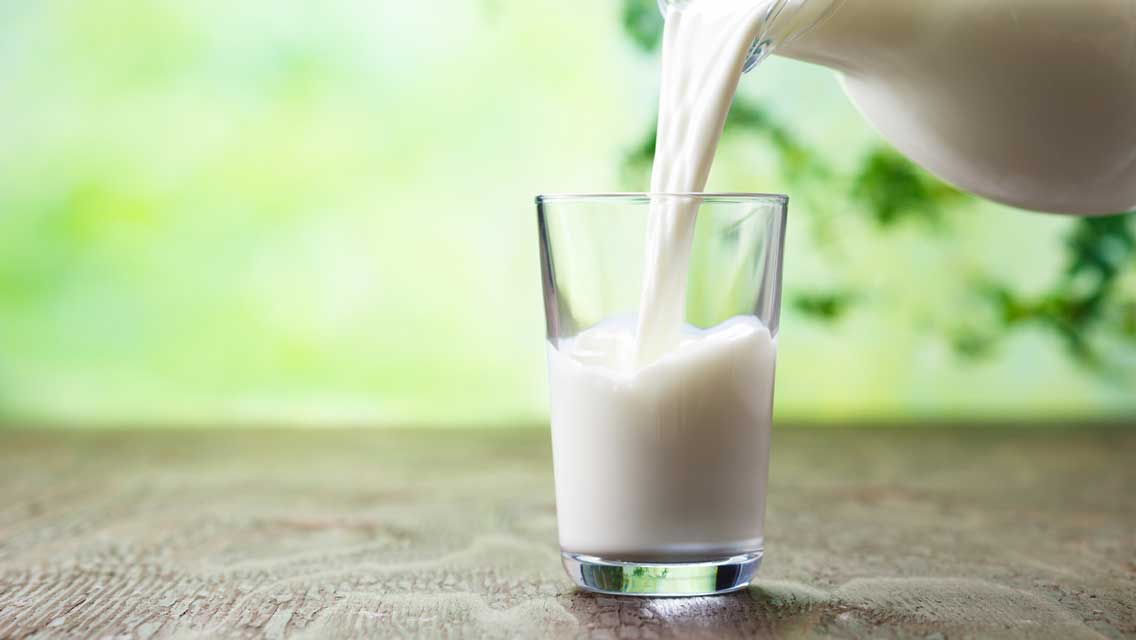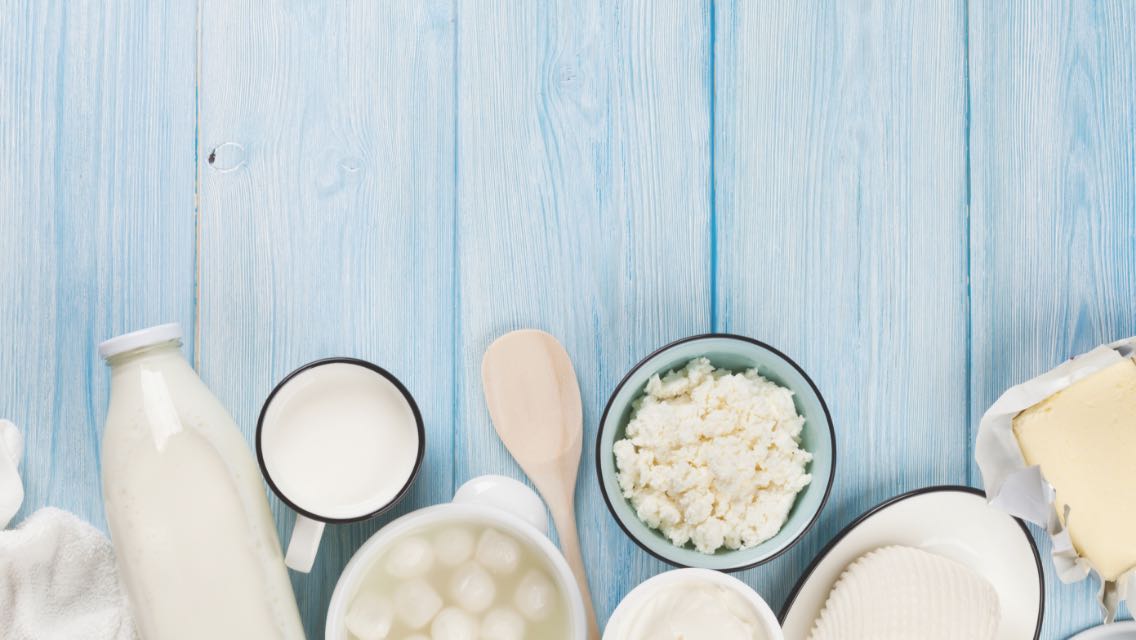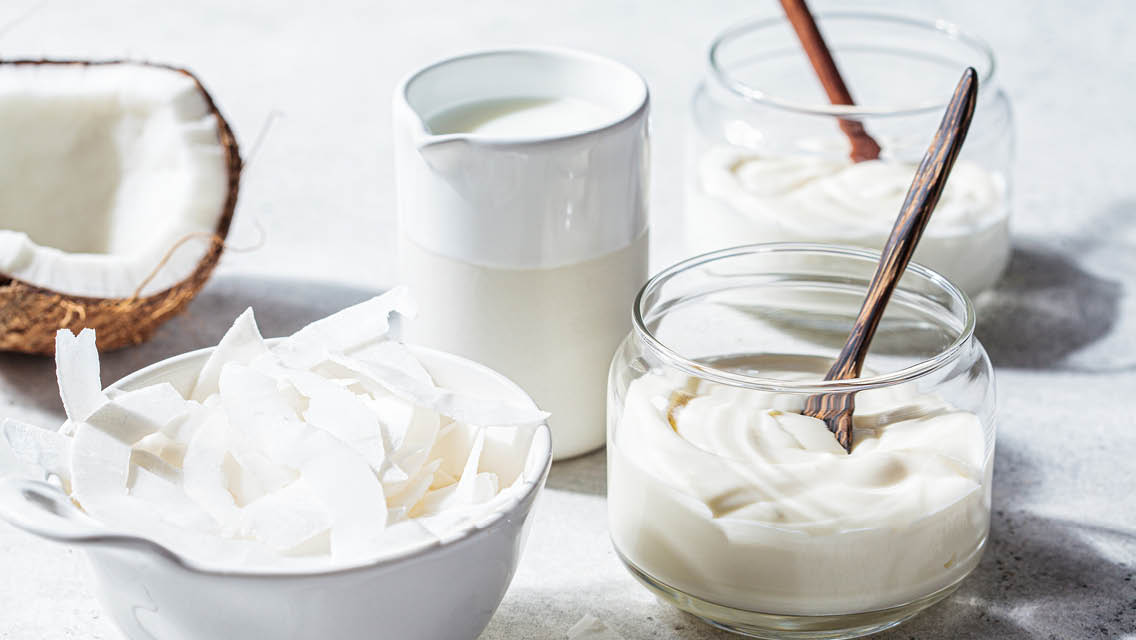You’re buzzing through the grocery store doing your usual, hasty label-reading when a label in the dairy section brings you to a dead halt. There, printed on the gallon jug of milk you’ve selected, is a little note indicating that the contents have “no added hormones.” But then you see a disclaimer in fine print: It says the government has determined that milk from cows that have been injected with added hormones does not adversely affect human health. Now you’re thoroughly confused.
Looking around, you realize that not every jug carries such claims and disclaimers. Do jugs that don’t carry the labels therefore have added hormones? What should you make of labels such as “original,” “select” or “organic”? Are cheese, yogurt and sour cream labeled? And should you care?
More than a decade ago, the U.S. government approved the use of recombinant bovine growth hormone (rBGH) – a synthetic version of the naturally occurring bovine growth hormone (BGH) – in dairy cows. This move set off a heated debate and a good deal of subsequent consumer confusion, neither of which has yet subsided.
Dairy products from cows treated with the synthetic hormone rBGH (also known as recombinant bovine somatotropin, or rBST, and marketed by agribusiness giant Monsanto under the brand name Posilac in the United States) are now ubiquitous in most American grocery stores, coffee shops, cheese shops and ice-cream parlors. The World Health Organization and numerous medical associations, including the American Medical Association and the American Dietetic Association, have concluded that milk and meat from rBGH-treated cows is safe for human consumption.
But many people remain wary of the hormone. Governments in Canada, Europe and elsewhere have blocked the sale of rBGH. Many physicians, scientists and natural-food advocates remain convinced that milk from cows injected with the drug is less healthy than milk from untreated cows, and that its consumption might lead to serious health problems, including early-onset puberty and several forms of cancer (see Web Extra!).
Such health concerns lie at the heart of the labeling frenzy. In 1993, shortly after the U.S. Food and Drug Administration (FDA) approved the use of rBGH, a small dairy in Maine began touting its product as being free of artificial hormones. This drew the ire of Monsanto. The company sued, claiming that Oakhurst Dairy’s “No Artificial Growth Hormones” label could be damaging to its business. In 2003, the suit was settled, with Oakhurst agreeing to add a note to its label indicating that the FDA had found no significant differences in cows treated with growth hormones. Other producers of rBGH-free milk, hoping to sidestep similar legal wrangling, quickly added similar statements to their labels.
Almost Natural
The FDA still stands behind its ruling that rBGH is safe for cows and humans, and many scientists and medical experts say the health concerns about rBGH are overblown. Manufacturers of the artificial hormone note that the supplement is modeled after a hormone that is naturally produced in the pituitary glands of cattle.
Proponents assert that the injected drug is virtually indistinguishable from naturally occurring BGH and that it benefits dairy farmers by boosting milk production in dairy cows by 10 to 25 percent. According to Monsanto, of the 9 million dairy cows in the United States, 35 percent are in herds supplemented with rBGH.
Critics, however, assert that rBGH is nonetheless an additive. Moreover, they note, the yield increases are pointless: U.S. markets are already glutted with milk surpluses, which further drive down already artificially low prices and hurt small dairy farmers. Critics also say that the potential health risks present a danger to the uninformed consumer public.
So what’s a smart shopper to do? Let’s begin by addressing the key concerns that swirl around rBGH – and the scientific research that underlies the arguments on each side of the debate. While the debate on each of these issues fills hundreds of pages in scientific journals and industry briefs, we’ll take a distilled look at common questions, their backstory and how scientific research weighs in.
Growing Up Too Fast
The question: Does drinking rBGH-treated milk cause early puberty in children?
The backstory: In 1997, a study published in Pediatrics suggested that American girls were developing secondary sexual characteristics at earlier and earlier ages. In an effort to explain this phenomenon, some researchers proposed the idea that hormones in milk (and some kinds of commercially produced meat) might be a contributing factor.
The research: Cows injected with supplemental hormones do indeed have higher hormone levels than untreated cows. And such synthetic hormones can make their way into raw milk. But milk from cows treated with rBGH is “virtually indistinguishable” from rBGH-free milk, according to information published on the Web site of Health Canada, a government resource. The total hormone levels in a glass of milk from rBGH-treated cows is no greater than the levels in a glass of rBGH-free milk, says John Fetrow, VMD, MBA, professor of veterinary medicine at the University of Minnesota. And no test can differentiate whether the hormones in a jug of milk are synthetic or natural.
Such hormones do survive pasteurization, a heat process that destroys microorganisms in milk. So a person who drinks milk, therefore, will inevitably down some amount of BGH or rBGH. But despite the similarity between bovine growth hormones and human growth hormones, there’s no evidence to suggest that ingesting cow hormones promotes human development, says Fetrow. For one thing, BGH and rBGH are essentially destroyed when they enter the human digestive system. Like any other protein-based hormones, the bovine growth hormones are broken down into their constituent amino acids before being absorbed into the bloodstream. In this form, functionally speaking, they are no different from the amino acids found in protein-rich foods like steak, eggs, tofu or beans.
To date, no studies have linked rBGH with early-onset puberty. “There is no scientific evidence whatsoever that milk from rBGH-treated cows is an issue” in the early puberty trend, says Paul Kaplowitz, chief of endocrinology at Children’s National Medical Center in Washington, D.C.
But critics of the supplemental hormone insist that not enough studies have yet been done, that it’s too soon to presume that rBGH is safe. Exposure to even low levels of rBGH may affect a child’s growth, says Martin Donohoe, MD, a faculty member at Portland State University and scientific director of the Campaign for Safe Food, run by the Oregon chapter of Physicians for Social Responsibility. “RBGH is a growth factor, so it certainly could be contributing to the [early puberty] trend,” he says. “Its primary purpose is to stimulate cells to grow and mature.” Kids are encouraged to drink a lot of milk, he notes, which increases their exposure to the potentially disruptive hormones.
It should be noted, however, that a handful of researchers have questioned whether the trend toward early puberty even exists. In 2000, Pediatrics published a critique by a group of endocrinologists who claimed that the 1997 study was flawed and that puberty rates were not clearly different than they had been 25 years earlier. The issue is still debated in medical circles.
Cow Health, Your Health
The question: Are germs or antibiotics more prevalent in milk from cows treated with rBGH?
The backstory: Cows injected with rBGH lactate longer than untreated cows. They are also more vulnerable to infection and illness. Even Monsanto acknowledges that rBGH injections may affect bovine health: The FDA-approved label for Posilac warns that cows injected with the product are at an increased risk of clinical mastitis (an infection of the udder that can produce visibly abnormal milk) and may require more frequent medication to treat health problems.
Dairy farmers treat cows infected with bacteria with antibiotics. And some scientists worry that increased use of antibiotics and other antibacterial products (not only in cows, but also in such household products as hand soaps) may, in turn, be contributing to the development of new strains of antibiotic-resistant microorganisms. Some consumer advocates worry that germs and antibiotics might make their way from sick cows into milk.
The research: In November 1998, a panel of animal-health experts appointed by the Canadian Veterinary Medicine Association reported the results of their study of the use of rBGH. They concluded that there were “a number of legitimate animal-welfare concerns” associated with the injections. For example, the study showed that use of rBGH increased the incidence of clinical lameness in cattle (generally defined as loss of function in one or more limbs) by 50 percent. The incidence of clinical mastitis increased 25 percent.
Mastitis typically occurs in 10 to 20 percent of a herd, notes Fetrow. This means that in a herd treated with rBGH, the total rates might climb to roughly 12 to 25 percent, a difference Fetrow characterizes as measurable, “but very small.” He also notes that the increased rate of infection among rBGH-treated cows is roughly similar to the rates of infection in any cows coaxed to produce a higher-than-normal volume of milk, whether as a result of changes in feed, bedding, climate control or other environmental variables.
Rates of sickness aside, plenty of safeguards are in place to make sure antibiotics and germs don’t make their way into milk, say dairy-management experts. For starters, pasteurization is designed to kill the pathogens (even antibiotic-resistant ones) in milk. Furthermore, the dairy industry has put practices in place to reduce the risk of infected milk entering the consumer market: Sick animals are quarantined. Holding tanks that may contain infected milk are drained, the fluid is discarded, and the containers are sanitized. “Every pickup from every dairy is tested for antibiotics,” Fetrow says, “and there are huge penalties for farmers if antibiotics are found.”
“I’d say that 99.9 percent of tanker loads that are picked up from farms are antibiotic-free,” adds Jeffrey Reneau, DVM, MS, professor of dairy management at the University of Minnesota. “And those that are ‘hot’ – that is, they test positive for antibiotics or some other problem – get dumped at the plant.”
Even if antibiotics did make their way into the milk supply, Fetrow asserts, the concentration would be so diluted by the time it reached your cereal bowl or cheese plate that its impact would be nil. “If there’s a risk at all here,” he says, “it’s like a tiny drop of water in a very large barrel.”
But others take a dimmer view of the antibiotics issue. Because rBGH can lead to increased use of antibiotics in animals, says David Wallinga, MD, director of the food and health program at the Minneapolis-based Institute for Agriculture and Trade Policy, it may ultimately contribute to the evolution of antibiotic-resistant organisms in the dairy industry. “By choosing to buy milk that’s rBGH-free, you’re helping reduce the amount of antibiotics being used on farms,” he says.
What’s a Concerned Consumer to Do?
Some find the science surrounding rBGH unsettling, concluding there’s too much we still don’t know. Others find the collected research reassuring: The links between rBGH and health problems are tenuous at best, they reason. Still others dispute whether any conclusions can yet be drawn on the hormone’s impact on humans. Only time will tell, they assert.
The bottom line? While informed skepticism is always healthy, how you ultimately assess the findings on rBGH probably will have less to do with the actual research and conclusions assembled by scientists than with your opinions on farming, chemistry and multinational corporations.
Some people object to all food additives, others take them on a case-by-case basis. Some individuals decry the injection of cows with rBGH as an animal-rights issue, others find such treatment no worse than milking a cow in the first place. Some consumers are willing to pay any price for hormone-free milk, others will weigh costs against possible risks and take their chances with rBGH. In the end, what you pour out of the carton and into your glass is entirely up to you.
Cream of the Crop
If you’re concerned about rBGH and its potential health effects, you may decide to limit your exposure to the hormone. If so, you’re not alone. Organic dairy is one of the fastest-growing sectors of the natural-foods market. Here are some simple steps you can take to limit your intake of added hormones.
Select rBGH-free products. Many grocery stores now carry milk with no added hormones – though it may cost roughly $1.50 extra per gallon. (Ask your grocer if you don’t see it.) Horizon Organic, a Boulder, Colo., company with nationwide distribution, makes rBGH-free yogurt, butter and even eggnog. Crème fraîche and kosher items are available from California-based Alta Dena Dairy, which also has a national reach. Tillamook, the nation’s second-largest producer of chunk cheese, recently went rBGH-free.
Go organic. Besides being hormone-free and antibiotic-free, organic milk, yogurt, butter and cheese (look for a USDA Organic label on the container) come from herds that eat grass or organic feed that is free of pesticides and genetically modified organisms. In addition, because of the more natural diets of the cows, organic dairy products may be extra nutritious. According to recent research from the University of Aberdeen, in Scotland, organic milk contains as much as 71 percent more of an essential omega-3 fatty acid (alpha-linolenic) than conventional milk. Another recent study by a team at the Danish Institute of Agricultural Sciences showed that organic milk also had significantly more vitamin E, beta-carotene, and antioxidants lutein and zeaxanthin.
Shop by mail. Many dairy products, including buttermilk, ice cream, yogurt, chocolate milk and an array of cheeses, are available by mail from dairies that avoid rBGH. To find one that will send its products, visit www.organicconsumers.org/rBGH/rbghlist.cfm or www.heall.com/resource/food.
Visit a specialty shop. Cheeses imported from Europe and Canada, where rBGH has been banned, are rBGH-free. Specialty cheese shops are often the best places to find these products, but, increasingly, large grocery stores also stock imported cheese.
This article originally appeared as “Hormonally Challenged Milk?”




This Post Has 0 Comments